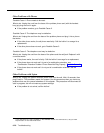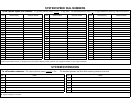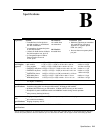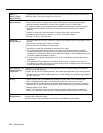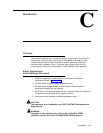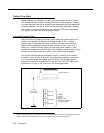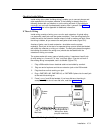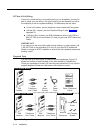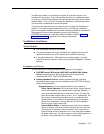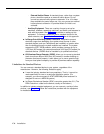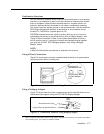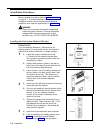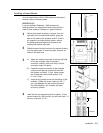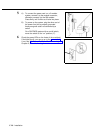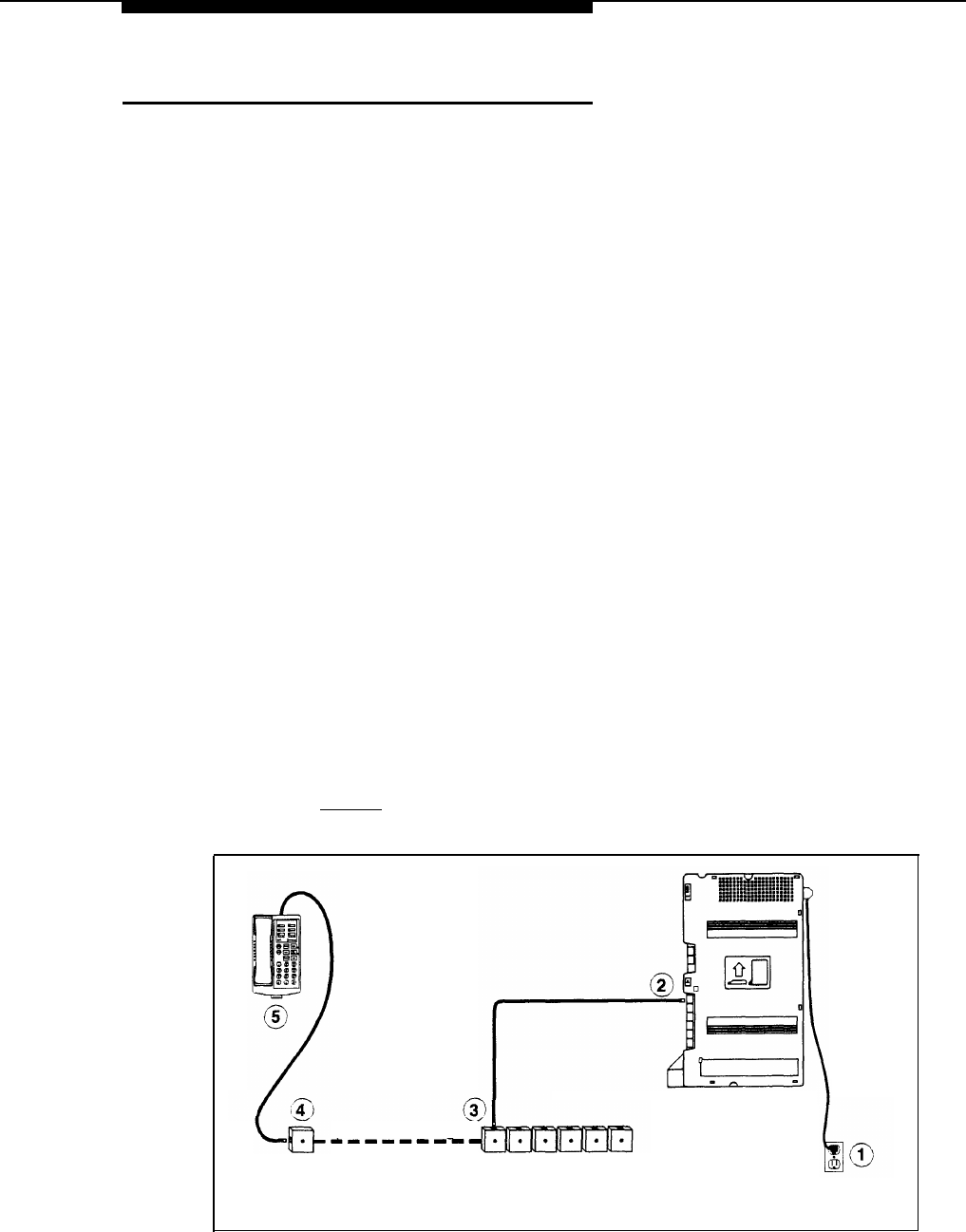
Check for Inside Wiring
If There Is Wiring
Inside wiring (also called “building wiring”) enables you to connect phones and
other equipment to the system modules. If the building is already wired, the
following section tells you whether or not the wiring will work. If the building is
not wired, you can have it professionally wired or wire it yourself. See ”If There
Is No Wiring” later in this appendix for additional information.
Inside wiring consists of wiring runs—one for each extension. A typical wiring
run starts with a wall jack near the system module(s). Then the wiring itself runs
inside the wall to the extension location where it ends in another wall jack. Since
the wiring is hidden, all you see are the wall jacks at both ends (Figure C-2).
A series of jacks—one for each extension—should be near the system
module(s). Each jack is the start of a separate wiring run and should be labeled
with either the extension or wiring run number. The wall jacks placed throughout
the building (the ends of the wiring runs) should also be labeled with the
extension or wiring run number.
The system works with many types of existing wiring. It requires at least 2-pair
(4-wire) wiring in a “home run” or “star” (not loop) setup. If you do not know if
the existing wiring is acceptable, test it as follows (Figure C-2):
1
Plug a 206 module into an electrical outlet not controlled by a switch.
2
Plug one end of a phone cord into an extension jack on the 206 module.
3
Plug the other end into a wiring run jack.
4
Plug a PARTNER-18D, PARTNER-18, or PARTNER-6 phone into the wall jack
at the end of that wiring run.
5
Press [
Intercom ] and lift the handset. If you hear dial tone, the wiring is
acceptable. If you do not hear dial tone, read the next section.
System
Phone
(hidden wiring
in wiring run)
Ext. 10
10 11 12 13 14 15
Wall Jack
Wiring Run Jacks
(one per extension)
206 Module
Power
Cord
Figure C-2. Testing Inside Wiring
Installation C-3



